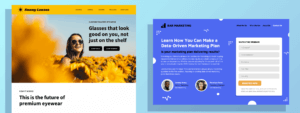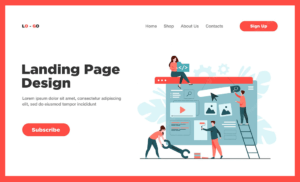
Making the most of your landing page
Your landing page is your point of conversion. It’s where you’ll turn curious visitors into new customers, clients or subscribers. Usually, these visitors will arrive having clicked on a paid ad or email, but they may also possibly have found their way there through social media or organic search.
Your visitors are already interested, that’s why they are there. The job of your landing page then has to do is generate conversions; make your visitors perform an action that moves your business forwards.
Unlike a homepage which is full of information and links to generate brand awareness and promote all your products and services, a landing page has a very singular purpose. You want to get your visitors to complete one particular task, e.g., register their details or buy something. The action you want them to take determines the type of landing page you need.
Types of landing pages
A landing page is a stand-alone webpage created specifically for an advertising or marketing campaign. There are two main types.
- Lead generation landing pages are designed to capture email addresses and often reward visitors with free downloads, webinars, or giveaways. Once an email connection has been established, you can nurture the lead over time. A variation of this includes a more straightforward format: squeeze pages aim to capture email addresses for a general mailing list.
- Clickthrough landing pages have a clear call to action button, which brings the user to the following action, usually a shopping cart, sales or price-plan page. The purpose of this page is to warm up your customers, get them excited about the offer or product you’re promoting and get them closer to the decision of making a purchase or commitment.
Other types of landing pages include splash pages, which usually ask a simple question, e.g. asking visitors to verify their age before proceeding to your website. Sales landing pages enable people to complete purchases right there and then.
Viral landing pages can help build brand awareness. Their focus is to provide interesting or entertaining content enough for users to want to share it on social media.

Key elements of a landing page
A landing page is usually only a stepping-stone, and time is short. You need to convince your visitor to take the action you desire as quickly as possible before you lose their attention and they move on. Here are some key elements you need to combine to make a good landing page.
- Use an attention-grabbing headline. Make your USP leap off the page. Think why the user would want to take immediate action. Use persuasive supporting body copy to reinforce your message.
- Make your call-to-action button / sign-up form obvious. This is the crux of your landing page. Whether capturing details or inviting users to click a button, these needs stand out clearly and are positioned above the fold. Repeat the same at the bottom of the page, so if your user has got that far, they don’t have to scroll up to find it.
- Sum up the personal benefits to the user. Let them know how this product or service will improve their lives make them feel.
- Provide social proof. Build users’ trust and your credibility by including testimonials, embedding social media, or showing your number of customers or sales. If you request sensitive information such as credit card details, include trust and privacy badges and seals such as Norton or Google Trusted Store.
- Target your page. Know exactly who you are talking to. Create different landing pages for different target audiences, then tailor that message depending on the user’s position in the sales funnel. The more landing pages you have, the more targeted you can be with your content, leading to more conversions.

Top tips for maximising conversions
You’ve decided on the type of landing page you need. You’ve combined the critical elements required and made multiple versions for different kinds of visitors. Now, make sure your landing page is successful by following these essential guidelines.
- Keep it simple. Avoid competing messages or calls to action that might divert users’ attention. Make sure every element of your landing page supports your Call to Action. Also, the simpler the page, the quicker it is to load!
- Make it obvious. People read differently online. Use headlines and subheadings to make sure your visitor knows immediately what’s on offer.
- Personalise your page. Make your landing page dynamic. Use personalised content, images, words, products or prices dependent on the user or their location.
- Don’t disappoint. If your visitors are arriving at your landing page via an ad, make sure your offer or product is exactly what was being advertised. You will immediately lose their interest if they feel confused or lost, even momentarily.
- Test your page. Test the success of different images. Test alternative headlines. Test various styles and sizes of CTA buttons and try out additional messages on them. Test out other testimonials or embedding types of social media. Keep tweaking your page to improve your conversions until you have made your landing page a veritable conversion machine.



Follow Us